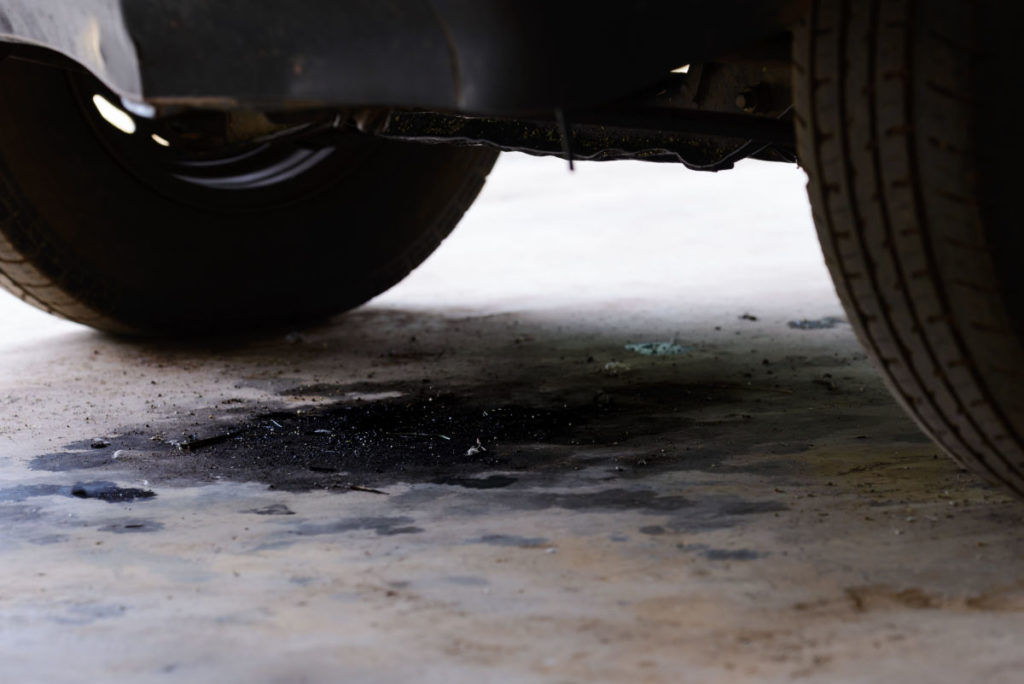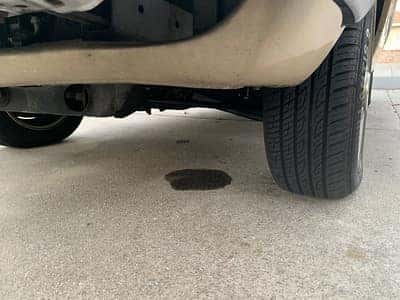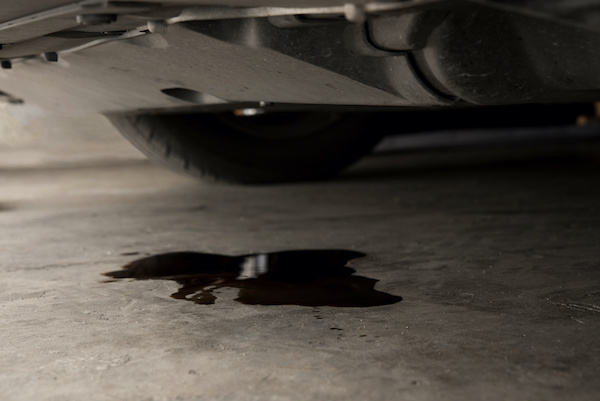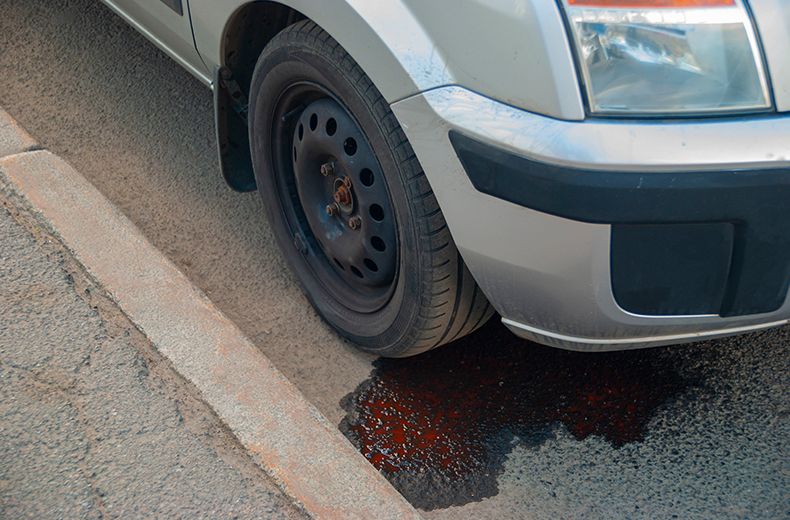To know if your car is leaking oil, look for oil spots under the vehicle. Check the oil level regularly.
Owning a car comes with the responsibility of ensuring that it’s in good working condition. One crucial aspect to monitor is the oil levels and any potential oil leaks. Oil leaks can not only lead to costly repairs but also pose a risk to the environment.
By understanding the signs of oil leakage, you can take prompt action to avoid further damage. We will discuss how to identify if your car is leaking oil and the steps to address this issue. Whether you’re a car enthusiast or simply a car owner, knowing the signs of oil leakage is essential for maintaining your vehicle’s performance and longevity.

Credit: lubemasterphilly.com
Common Signs Of An Oil Leak
Keep an eye out for oil spots under your car, a burning smell, or low oil levels. These could indicate an oil leak that needs immediate attention. A quick inspection can help avoid costly damages down the road.
Oil Spots Under The Car
Oil spots under your car are one of the most common signs of an oil leak and should never be ignored. So, whether you have noticed a small damp patch or a full-blown oil slick on the ground, it is crucial to take action. These oil spots generally appear directly under the engine and can range in size and color. They can be black or dark brown, indicating older oil, or they might be stained with a rainbow-like sheen.
The appearance of oil spots generally means that oil is leaking from your car’s engine or oil reservoir. This leakage can occur due to degraded gaskets, broken seals, cracked hoses, or even a damaged oil filter. The leaked oil then drips onto the ground, leaving these tell-tale spots. If left untreated, oil leaks can lead to serious and costly engine damage, making it essential to address the issue promptly.
Burning Smell While Driving
Another surefire sign of an oil leak is the presence of a burning smell while driving. If you detect a strong odor like burnt oil or something acrid, it is a cause for concern. This smell usually emanates from the engine compartment and may become more noticeable when you stop at traffic signals or wait with the engine idling.
The burning smell is often an indication that engine oil is leaking onto hot engine parts, such as the exhaust manifold or the engine block, where it gets heated and starts to burn. This can not only affect the performance and efficiency of your vehicle but also poses a potential fire hazard. So, if you notice a persistent burning smell, it is important to investigate further to identify and fix any oil leakage.
Monitoring Oil Levels
Monitoring oil levels in your car is crucial to ensuring optimal performance and preventing potential damage. By regularly checking the oil dipstick and observing changes in engine performance, you can quickly identify if your car is leaking oil and take necessary action. Let’s dive into these essential monitoring practices to keep your car running smoothly.
Checking The Oil Dipstick Regularly
Checking the oil dipstick is a simple yet effective way to monitor oil levels in your car. Here’s a quick step-by-step guide:
- Park your car on a level surface to get an accurate oil level reading.
- Allow the engine to cool down for a few minutes to prevent injury from hot oil.
- Locate the oil dipstick typically with a brightly colored handle for easy identification.
- Remove the dipstick and wipe it clean with a cloth or paper towel.
- Reinsert the dipstick completely, and then pull it out again to check the oil level.
- The oil level should fall between the minimum and maximum marks on the dipstick. If it’s below the minimum mark, your car may be leaking oil.
Observing Changes In Engine Performance
Changes in engine performance can be indicative of an oil leak. Keep an eye out for the following signs:
- Increased exhaust smoke could signal burning oil, which may result from a leak.
- Reduced fuel efficiency may occur if the engine is working harder due to low oil levels.
- Engine knocking or ticking noises could indicate insufficient lubrication due to oil leakage.
- Visible oil puddles under the car or around the engine bay are clear indicators of a leak.
Visual Inspection Of The Engine
When it comes to ensuring the proper functioning of your vehicle, a visual inspection of the engine is essential in identifying any potential oil leaks. By visually examining the engine, car owners can pinpoint any signs of oil leakage and take timely measures to address the issue, thereby preventing any further damage to the vehicle.
Looking For Oil Stains Or Wet Spots
During regular maintenance checks, observe the engine for any visible oil stains or wet spots. These can indicate a leak from the engine or associated components. Specific areas to examine include the engine block, valve cover gasket, and oil pan.
Inspecting The Oil Pan And Gaskets
Thoroughly inspect the oil pan and gaskets for signs of deterioration or damage. Loose or worn out gaskets can lead to oil leaks. Additionally, ensure that the drain plug on the oil pan is securely fastened to prevent any leakage.
Addressing An Oil Leak
When it comes to maintaining your car, addressing an oil leak is crucial to avoid potential damage to your engine. Spotting an oil leak early on can save you from costly repairs down the line. In this article, we will explore how to locate the source of the leak and what steps to take to address it.
Locating The Source Of The Leak
If you suspect your car is leaking oil, the first step is to determine the source of the leak. While some oil leaks can be easily spotted, others may require a closer inspection. Here’s how you can locate the source:
- Begin by parking your car on a clean, flat surface and let the engine cool down.
- Next, slide underneath your car and visually inspect the area. Look for any signs of oil puddles or dripping.
- Pay close attention to the oil pan, drain plug, and oil filter, as these are common areas for leaks to occur.
- If you are unable to locate the source visually, you can use a UV dye or leak detection kit to help pinpoint the leak.
- Using the dye or kit as instructed, you can trace the oil leak back to the source.
By following these steps, you will be able to identify where exactly the oil leak is originating from in your car.
Seeking Professional Help If Needed
If you are unable to locate or address the oil leak on your own, it is essential to seek professional help. An experienced mechanic will have the expertise and tools to diagnose and repair the leak effectively. Here are a few reasons why seeking professional help is important:
- A professional mechanic can accurately identify the source of the oil leak, ensuring that the right repairs are made.
- They have access to specialized equipment and diagnostic tools that can quickly pinpoint the problem.
- By entrusting your car to a professional, you can have peace of mind that the repair is done correctly, preventing further damage.
- Additionally, a mechanic may be able to identify any underlying issues contributing to the oil leak, allowing for comprehensive repairs.
Remember, addressing an oil leak promptly is crucial to maintain the health and performance of your vehicle. Whether you are able to locate the source of the leak yourself or require professional assistance, taking action early can save you from potential engine damage and expensive repairs in the long run.
Preventive Measures
Keeping an eye out for potential oil leaks in your car can save you from costly repairs down the line. To prevent oil leaks, follow these Preventive Measures:
Routine Maintenance Schedule
Regularly adhere to your car’s routine maintenance schedule to detect and address oil leaks promptly.
Using The Right Type Of Oil
Make sure to use the right type of oil recommended by your car manufacturer to prevent potential leaks.

Credit: www.performancehondastore.com

Credit: davidsgarageakron.com
Frequently Asked Questions Of How To Know If Your Car Is Leaking Oil
How Can You Tell If Your Car Has An Oil Leak?
To check for an oil leak in your car, look for stains or puddles of oil underneath the vehicle. You may also notice a burning smell or see blue smoke coming from the exhaust. If the oil level constantly drops or you find oil on the engine components, it’s likely you have an oil leak.
Can You Drive A Car With An Oil Leak?
Yes, you can drive a car with an oil leak, but it’s not recommended. An oil leak can lead to engine damage and safety hazards. It’s best to have it inspected and repaired by a professional mechanic.
Are Oil Leaks Expensive To Fix?
Yes, oil leaks can be expensive to fix due to potential engine damage. It is crucial to address them promptly to prevent further issues. Regular maintenance can help catch small leaks early and reduce repair costs.
What 3 Things Can Cause An Oil Leak?
Oil leaks can be caused by three main factors: worn-out gaskets, damaged oil pan or drain plug, and degraded oil seals. Aging gaskets lose their effectiveness, leading to leaks. A crack in the oil pan or damaged drain plug can cause oil to escape.
Oil seals can degrade over time, resulting in leaks.
How Do I Check For Oil Leaks In My Car?
To check for oil leaks, inspect under your car for any puddles or oil spots.
What Are Common Signs Of An Oil Leak?
Look for oil patches on your driveway, burning smell, low oil levels, or oil spots.
Can An Oil Leak Cause Engine Damage?
Yes, oil leaks can lead to engine damage if left unaddressed, causing costly repairs.
Conclusion
It is crucial to be vigilant and attentive to any signs of oil leakage in your car. By regularly monitoring the oil levels, inspecting the engine and surrounding areas, and seeking professional assistance when necessary, you can ensure the longevity and optimal performance of your vehicle.
Don’t delay in addressing any signs of leakage, as it can lead to more severe engine damage and increased repair costs. Stay proactive and take care of your car to avoid any further issues down the road.
- How Much Does It Cost to Fix a Sunroof: Expert Pricing Guide - May 18, 2024
- How Much is Oil Change at VW Dealer: Discover Cost-Saving Options Now! - May 18, 2024
- How to Calibrate Your Fuel Gauge: Step-by-Step Guide - May 18, 2024



